Few things are more painful for business leaders than accepting that their company is in financial distress. Such a condition seems to be an explicit acknowledgment of “failure.” However, as a fractional CFO who has helped many organizations navigate this challenge, I would like to offer some reassurance. It is possible to resolve a company’s financial issues while preserving (or even improving) its value through corporate debt restructuring.
In many cases, adjusting the maturity profile of the obligations alone can be the “fix.” Without assigning blame, a simple lack of disciplined debt amortization and management can lead to a liquidity crisis despite a durable and viable core operating business.
Within this blog, I will explain corporate debt restructuring and the steps involved in navigating such circumstances.
Table of Contents
What is Corporate Debt Restructuring?
Corporate debt restructuring is the process of optimizing a company’s capital structure to create a clear path to financial viability and, ultimately, to manufacture franchise value. Sometimes referred to as business debt restructuring, this process involves assessing a distressed company’s financial obligations and helping it develop and execute a plan that sets forth and recasts obligations consistent with the ability of the firm’s operating business to meet them.
The No-BS Financial Playbook for Small Business CEOs
Are you tired of making costly financial mistakes? Stop guessing and start growing. Learn how to create a scalable and valuable company while minimizing risk with this playbook from a serial entrepreneur who has been in your shoes.
Although individuals, governments, and non-profit organizations can engage in debt restructurings, this post will focus on for-profit businesses.
Also, please know that when we refer to “debt,” we mean all the company’s financial obligations, from loans and bond instruments to outstanding vendor, real estate, and equipment debt payments, which typically fall into the accounts payable and lease obligation categories.
What is the Purpose of Corporate Restructuring?
Sometimes, people ask me if debt restructurings are simply a precursor to filing for bankruptcy. That’s a good question because they can be, but not in the way that you might think.
A skilled advisor should be able to help you navigate your situation both in and out of court. In many cases, an out-of-court debt restructuring is preferable as professional costs are lower, there is less disruption to the business, and management retains more control. However, there are many instances when a formal bankruptcy can be helpful.
I want to make it abundantly clear that debt restructuring aims to take all steps necessary to avoid a business interruption, liquidation, or cessation. When companies cease operating, almost everyone loses (except lawyers) – people lose their jobs, creditors lose money, and entrepreneurs experience notable setbacks to their dreams and investments. Therefore, restructuring a company’s debt is typically part of a holistic corporate restructuring strategy, whereby the intent is to “turn the company around” by improving its financial and operational health and, thus, its long-term prospects. Indeed, many of my cohorts refer to this work as a business turnaround and restructuring.
Let me show you what I mean.
In-Court vs. Out-of-Court Restructurings
When a company cannot pay its bills and needs formal debt relief, there are two possible (big picture) paths forward: an out-of-court restructuring or an in-court restructuring (Chapter 11 bankruptcy).
In most cases, “Plan A” would be to try to resolve your situation out of court and only consider an in-court solution if Plan A is not achievable. Settling out of court is faster and much less expensive, given that anytime you involve the government, you must wade through a lot of red tape, and bankruptcy lawyers charge $1,000 per hour or more! It is also less stressful because you are more likely to maintain control of the situation. But let’s walk through it so you know what to expect.
Developing the Plan
All corporate debt restructuring engagements involve evaluating your existing debt and developing a proposed repayment plan that meets key criteria. The plan must:
- Be viable and supportable from the capital resources of the business
- Address obligations in a comprehensive and fair manner
- Largely reflect the restructuring circumstances and outcomes that the firm will achieve upon emergence from a formal bankruptcy
- Demonstrate superior outcomes for most key stakeholders vs. other alternatives.
It is best to undergo this exercise with the help of a financial professional who specializes in corporate restructuring. They will review your financial situation and records to evaluate your challenges and help you develop a comprehensive plan and approach tailored to your needs. Here are a few tools and techniques that can be effective:
- Debt refinancing
- Renegotiating payment terms with existing lenders and obligees
- Debt for equity swaps
- Asset sales
- Debt exchanges (i.e., exchanging unsecured for secured debt, with improved terms for vendors like higher interest rates or security and benefits for the company, like extended maturity)
- Vendor trust structures
- Rights and other equity offerings and related capital raises in the context of a debt restructuring solution
Out-of-Court Restructuring

With an out-of-court restructuring, once you (and often various management and board representatives) have settled on a thoughtful and professional plan, your advisor will negotiate with your creditors, stakeholders, and capital providers. The execution of such a plan can often be complex, nuanced, and challenging.
Many stakeholders will be distrustful and protective of their own interests (vs the good of the “whole”). Your advisor’s job is to help all stakeholders understand why working with you outside the court will be in their best interest. The lack of cooperation (of all) leads to highly inferior outcomes.
In-Court Restructuring
There are typically two key reasons to pursue a restructuring process in bankruptcy court.
- To enforce a pre-negotiated (or pre-packaged) plan1 that failed in the out-of-court environment; or
- To allow the company to “buy time” to develop a plan for dealing with unpaid creditors and emerging from bankruptcy, effectively giving the company a “fresh start.”
It is a legal bankruptcy in both cases, but the approach differs. Allow me to explain.
Pre-Negotiated Plan
Suppose you are a soft drink manufacturer that buys sugar from multiple vendors. You can’t pay your bills because you ran out of money, so you work with an advisor to develop a sensible debt repayment plan. All the vendors (and other lenders and creditors) agree to the plan except for one. They have an unreasonable demand and won’t budge.
Instead of agreeing to the outrageous demand of that one vendor, which would impact other creditors unfairly and inconsistently, you might turn to the courts for support. Courts have the power to enforce the plan (upon approval of its components and criteria) – binding all creditors in each class to their respective “treatment.”
Chapter 11 Bankruptcy Filing Without a Plan in Place
If a company runs out of money, does not have a plan to restructure its debt, and is too challenged fending off creditor lawsuits to sort things out, it can turn to the bankruptcy court for protection in the form of an “Automatic Stay.” An automatic stay is a court order that tells creditors they must temporarily back off (usually for 6 months or so) while the company devises a plan for settling its debts and managing creditors. That allows the company to move forward under the construct of a fresh start.
This arrangement benefits the organization as it is debtor-friendly but can work out nicely for everyone involved. A perfect example of this is the Conseco bankruptcy in the early 2000s.
Conseco was a big insurance company that borrowed a lot of money from bondholders. The maturity profile was aggressive, presenting challenges to the company’s liquidity and viability despite a core business that was fundamentally sound and profitable.
The company filed for bankruptcy and renegotiated its outstanding debts. In exchange for agreeing to extended repayment terms, its creditors received equity in the company. Although the bankruptcy entailed time, expense, and risk, creditors fared well overall. Most received full repayment and gained equity in the company, which was a significant benefit beyond the creditors’ initial claims.
A Word of Caution
Although this may sound refreshingly gentile, make no mistake, undergoing bankruptcy is a lengthy process involving many steps, burdensome oversight, cost, and time. The company must develop a complex plan within the construct of a formal bankruptcy. Then, to gain the court’s approval, the plans must meet many rigorous tests and criteria, including preparing a disclosure statement and setting forth a timeline and process that creditors and key stakeholders must vote on and approve.
Finally, if the plan is approved, the company must adhere to stringent requirements throughout implementation. If the plan is rejected, companies are usually forced down the liquidation path (a liquidating Chapter 11 or Chapter 7). Creditor and stakeholder recoveries, in this case, are generally poor, though at least fair because there are clear rules dictating which creditors to pay first.
How Does the Corporate Debt Restructuring Process Work?
Although it can certainly be helpful to understand how this process could unfold, you don’t need to make these decisions alone. Ideally, here’s how it works:
- Build your team and review detailed financial records.
- Identify key plan components that will meet the essential criteria (i.e., it must improve franchise viability, yield outcomes for most stakeholders superior to alternatives, and be achievable).
- Develop a roadmap to craft and communicate the plan and prepare for the last step
- Implementation
The Bottom Line
Corporate debt restructuring isn’t an admission of failure—it’s a strategic process for businesses facing financial challenges. Whether pursued through out-of-court negotiations or formal bankruptcy proceedings, the goal is to preserve business value, protect jobs, and create a sustainable economic foundation for future growth.
The most crucial step for business leaders facing financial distress is engaging with experienced professionals early. A skilled restructuring advisor can help you navigate complex negotiations with creditors, develop a viable repayment plan, and implement the necessary operational changes to ensure long-term success.
Remember that most stakeholders want your business to survive and thrive. With proper guidance and a well-executed restructuring plan, your company can emerge stronger and better positioned for sustainable growth.
If you are concerned about your company’s financial position, don’t wait until the situation becomes critical. Contact a qualified financial advisor with restructuring expertise to explore your options and develop a strategy tailored to your circumstances.
1 A pre-negotiated or pre-packaged bankruptcy is one where the company has already worked out most terms with creditors before filing, making the court process faster and more predictable.





